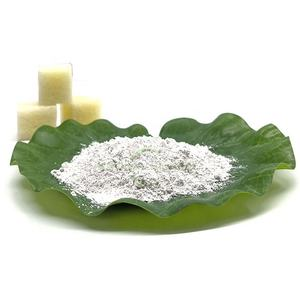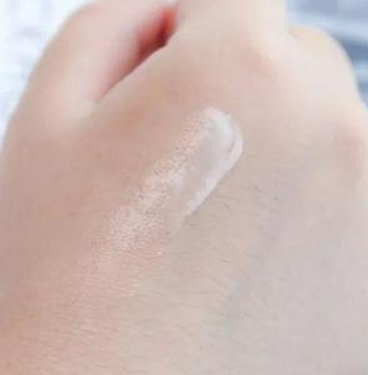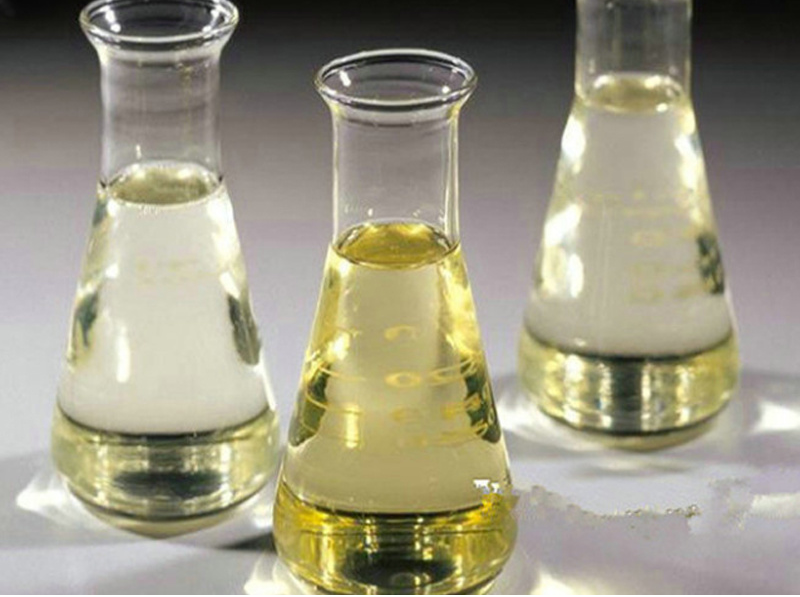1. Gemini Surfactants’ Chemical Structure
1.1 What Are Gemini Surfactants?
Gemini surfactants, likewise referred to as dimeric or twin-chain surfactants, stand for a revolutionary class of surface-active representatives made to outmatch conventional single-chain surfactants. These molecules include two hydrophobic tails, 2 hydrophilic head groups, and a spacer group that chemically connects both monomers. This one-of-a-kind design allows Gemini surfactants to exhibit exceptional surface activity, lower critical micelle concentration (CMCs), and improved functional versatility. Their exploration in the late 20th century marked a paradigm change in surfactant science, enabling developments in industries varying from oil recovery to nanotechnology.

Gemini Surfactant
1.2 Gemini Surfactants’ Chemical Structure: A Blueprint for Excellence
The structural intricacy of Gemini surfactants is their distinguishing attribute. The hydrophobic tails are normally carbon chains (C EIGHT– C ₂₀) or fluorinated chains (CF ₈– CF ₂₀), enhanced for solubility in natural or aqueous systems. The hydrophilic head teams can be cationic (e.g., quaternary ammonium salts), anionic (e.g., sulfonates), nonionic (e.g., polyethylene glycol), or zwitterionic (e.g., betaines). The spacer group, a crucial design aspect, varies in length (2– 20 atoms), strength (e.g., aromatic rings vs. versatile aliphatic chains), and polarity (e.g., ether, amide, or ester linkages).
This modular structure makes it possible for fine-tuning of residential properties:
Short spacers boost intermolecular communications, reducing CMC by 1– 2 orders of magnitude compared to traditional surfactants.
Inflexible spacers boost thermal stability and directional alignment at interfaces.
Polar spacers intensify solubility in polar solvents and facilitate ion exchange applications.
As an example, cationic Gemini surfactants with quaternary ammonium heads and brief ethylene oxide spacers are optimal for antimicrobial formulas, while anionic Gemini surfactants with sulfonate heads and lengthy alkyl spacers master heavy metal chelation.
2. Gemini Surfactants’ Core Residences
2.1 Physical and Chemical Attributes of Gemini Surfactants
Gemini surfactants combine remarkable physical resilience with amazing chemical adaptability:
Surface Area Tension Reduction: They reduced water surface stress to <20 mN/m, surpassing conventional surfactants (30–40 mN/m).
Thermal Stability: Many variants withstand temperatures up to 200°C, critical for high-temperature industrial processes.
Low CMC: Their CMC can be as low as 10⁻⁵ M, enabling efficient use at minimal concentrations.
pH and Electrolyte Tolerance: Unlike traditional surfactants, Gemini surfactants maintain performance in extreme pH (1–14) and high-salinity environments.
Chemically, they resist hydrolysis and oxidation, making them suitable for aggressive chemical applications. For instance, Gemini surfactants with fluorinated tails exhibit superhydrophobicity and oleophobicity, ideal for nonstick coatings and self-cleaning surfaces.
2.2 Functional Properties of Gemini Surfactants
Beyond their intrinsic properties, Gemini surfactants deliver transformative functionality through tailored design.
Enhanced Emulsification: Their dual hydrophobic tails stabilize oil-in-water or water-in-oil emulsions with unprecedented efficiency.
Antimicrobial Activity: Cationic Gemini surfactants disrupt bacterial cell membranes, offering broad-spectrum antimicrobial efficacy.
Foam Stabilization: They generate stable, long-lasting foams with high air retention, critical for firefighting foams and cosmetic formulations.
Nanoparticle Synthesis: Gemini surfactants act as structured directing agents for creating uniform nanoparticles in catalysis and drug delivery.
A standout application is in gene therapy, where Gemini surfactants form complexes with DNA to enable noninvasive transfection, showcasing their biocompatibility and precision.
| Parameter | Details |
| Product Name | Gemini Surfactant (Dual-Chain Surfactant) |
| Chemical Structure | Two hydrophobic chains + two ionogenic groups + a bridging group |
| Appearance | White granules |
| Purity | ≥99% |
| Solubility | Highly soluble in water |
| Krafft Point | Significantly lower than conventional surfactants |
| Critical Micelle Concentration (CMC) | 2–4 orders of magnitude lower than conventional surfactants |
| Surface Tension Reduction | Reduces surface tension by 7–9 mN/m compared to conventional surfactants (e.g., SDS: ~38 mN/m → Gemini: ~30 mN/m) |
| Hydrophobic Chain | Typically C12–C18 alkyl chains |
| Bridging Group | Short-chain (e.g., -CH₂-), long-chain, or rigid/flexible functional groups |
| Ionic Type | Cationic (Quaternary Ammonium Salt Type) |
| pH Stability | Stable in a wide pH range (pH 4–10) |
| Thermal Stability | Stable at temperatures ≤ 80°C |
| Packaging | 25 kg/bag or drum |
| Storage Conditions | Store in a cool, dry place away from direct sunlight |
| Shelf Life | 12–24 months under proper storage |
3.Structure Property Relationships in Gemini Surfactants: From Molecular Design to Functionality
The relationship between molecular architecture and performance in Gemini surfactants is exquisitely precise. Key principles govern this interplay:.
Spacer Length and Rigidity:Short spacers (2–5 atoms) maximize headgroup interactions, reducing CMC but increasing aggregation.
Long spacers (10–20 atoms) promote flexibility, enhancing solubility and reducing interfacial tension.
Rigid spacers enforce directional alignment, improving crystallinity in solid-state applications.
HeadGroup Polarity:Cationic heads excel in antistatic and antimicrobial roles.
Anionic heads are superior for heavy metal removal and detergent applications.
Nonionic heads offer low toxicity and compatibility with sensitive biological systems.
Hydrophobic Tail Symmetry:Symmetric tails (e.g., C₁₂–C₁₂) ensure uniform packing, critical for ordered mesophase formation.
Asymmetric tails (e.g., C₁₂–C₁₈) enable tailored solubility and phase behavior for complex mixtures.
These relationships are harnessed to engineer surfactants for specific tasks, such as low-foam Gemini surfactants for industrial cleaning or highly charged Gemini surfactants for electrostatic deposition in coatings.
4. Gemini Surfactants’ Advantages and Limitations
4.1 Advantages of Gemini Surfactants
Gemini surfactants offer unmatched benefits.
Superior Efficiency: Their low CMC reduces material costs and environmental impact.
Functional Versatility: They enable innovations from smart textiles to biodegradable plastics.
Environmental Compatibility: Many variants are biobased and readily biodegradable, aligning with green chemistry goals.
HighValue Applications: Their use in nanomedicine and clean energy positions them as enablers of future technologies.

4.2 Limitations of Gemini Surfactants
Despite their strengths, challenges persist.
Cost: Synthesis of Gemini surfactants is energy-intensive, increasing production costs.
Scalability: Complex multistep synthesis limits large-scale adoption for commodity applications.
Toxicity Concerns: Certain cationic variants may exhibit cytotoxicity at high concentrations, necessitating careful formulation.
5. Applications of Gemini Surfactants
Gemini surfactants power cutting-edge technologies across industries.
Oil and Gas: As enhanced oil recovery agents, they reduce interfacial tension between crude oil and water, boosting extraction efficiency.
Pharmaceuticals: In liposomal drug delivery, they encapsulate therapeutics for targeted release.
Agriculture: As pesticide adjuvants, they improve herbicide adhesion and penetration.
Cosmetics: In antiaging creams, they enhance skin hydration and active ingredient absorption.

Materials Science: They template mesoporous silica for catalysis and gas separation.
6.Environmental and Safety Performance of Gemini Surfactants
6.1 Sustainability in Gemini Surfactant Production
The industry is prioritizing green synthesis routes.
Biobased feedstocks (e.g., plant-derived fatty acids) reduce reliance on petrochemicals.
Enzymatic catalysis and microwave-assisted synthesis minimize energy consumption and waste.
6.2 Safety and Regulatory Compliance
Gemini surfactants meet stringent safety standards.
Nonirritating: Many variants are dermatologically tested for use in cosmetics and medical devices.
Low Ecotoxicity: Biobased Gemini surfactants exhibit EC50 values >< 20 mN/m, going beyond traditional surfactants (30– 40 mN/m).
Regulative Approval: They adhere to EU REACH, FDA 21 CFR, and ISO 14000 standards.
Final Thought: Gemini Surfactants– A Stimulant for Advancement
Gemini surfactants are not simply chemicals; they are designers of development in contemporary science. Their structure-property relationships open opportunities as soon as deemed unattainable, from ultra-efficient detergents to lifesaving genetics treatments. While difficulties like expense and scalability continue to be ongoing, study and procedure optimization are swiftly addressing these obstacles. For markets looking for edge-of-the-envelope efficiency, Gemini surfactants represent the future of surface science. By partnering with pioneers and leveraging their unequaled layout versatility, you can transform your applications and lead the next wave of technical innovation. Welcome the power of Gemini surfactants– and redefine what’s feasible.
Supplier
Surfactant is a trusted global gemini surfactants supplier & manufacturer with over 12 years experience in providing super high-quality surfactant and relative materials. The company export to many countries, such as USA, Canada,Europe,UAE,South Africa, etc. As a leading nanotechnology development manufacturer, surfactanthina dominates the market. Our professional work team provides perfect solutions to help improve the efficiency of various industries, create value, and easily cope with various challenges. If you are looking for gemini surfactants, please send an email to: nanotrun@yahoo.com
Tags: surfactants,cationic gemini surfactants,gemini surfactant example


